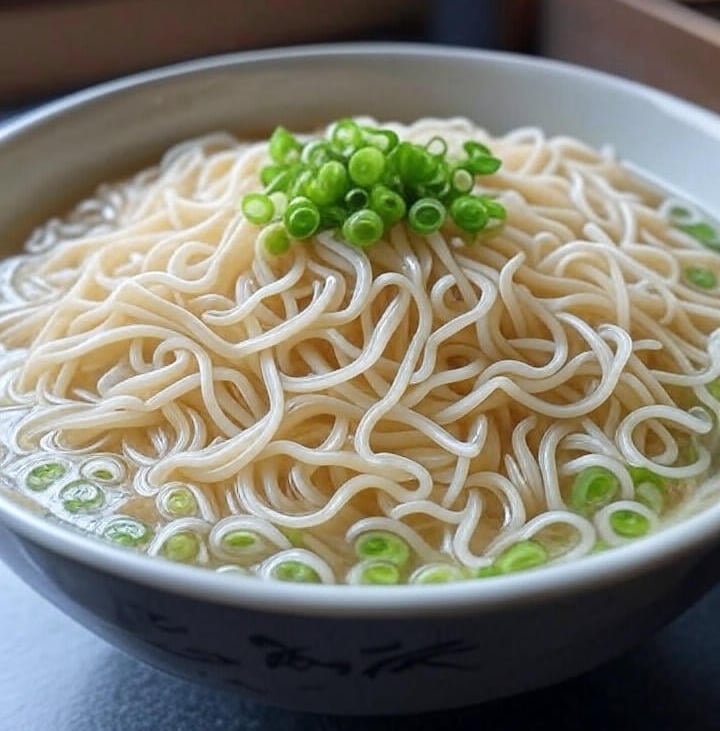Welcome to Noodles of Asia ! - A Woke Noodle Blog
Embracing Rice Vermicelli: A Journey Through Asia’s Delicate Noodle


Hey there, noodle enthusiasts! If you've ever enjoyed a dish of ultra-thin, silky noodles, either chilled with a dipping sauce or served in a light broth, you’ve likely tasted sōmen. These delicate wheat-based strands are a cherished part of Japanese cuisine, prized for their fine texture and refreshing taste. Whether enjoyed cold on a hot summer day or warm during cooler months, sōmen brings a unique joy. In this post, we’ll explore its origins, history, some fascinating facts, and a few famous recipes to inspire your next culinary adventure. Let’s dive in!
Origins and History of Sōmen
Sōmen is believed to have originated in China, with thin wheat noodles introduced to Japan around the 7th century during the Nara period (710–794), likely by Buddhist monks. The technique of stretching and drying wheat dough into fine strands evolved in Japan, particularly in regions like Nara and Mie Prefecture, where it became a specialty. By the Edo period (1603–1868), sōmen gained widespread popularity, with artisans perfecting the hand-stretched method. Its portability made it a favorite among travelers and laborers, and it spread across Japan, influencing regional styles. Today, sōmen remains a symbol of Japanese culinary tradition.
Interesting Facts About Sōmen
Sōmen isn’t just food—it’s a cultural treasure! Here are some intriguing tidbits:
Regional Variations Galore: Japan features diverse sōmen styles—Nara’s hand-stretched Ise ebi sōmen with lobster, Mie’s Nagatanien sōmen with a rich broth, and Okinawa’s unique twists with local spices.
Noodle-Making Art: Traditional sōmen is made by stretching wheat dough with oil, a labor-intensive process that can take days, resulting in its signature thinness.
Summer Tradition: Chilled sōmen, often served with nagashi (flowing water) at festivals, is a cooling summer ritual, symbolizing renewal.
Health Appeal: Low in calories and easy to digest, sōmen is a popular choice for light meals, often paired with healthy toppings.
Cultural Rituals: In some regions, sōmen is served during celebrations or as an offering, reflecting its deep cultural significance.
These facts highlight sōmen’s evolution from a simple noodle to a celebrated Japanese delicacy.
Famous Sōmen Recipes
Sōmen’s charm lies in its versatility. Here are some iconic recipes, from refreshing classics to warm innovations. (Note: These are overviews—adjust to taste and check full recipes online for details.)
Hiyashi Sōmen: Chilled sōmen served with a cold tsuyu dipping sauce, garnished with scallions and nori—perfect for hot days.
Nyūmen: Warm sōmen in a light dashi broth with soy sauce, often topped with chicken or vegetables—a cozy winter dish.
Nagashi Sōmen: Chilled sōmen floated down bamboo channels with flowing water, caught and dipped in sauce—a fun communal experience.
Sōmen Salad: Cold sōmen mixed with shredded vegetables, ham, and a sesame dressing, popular in Hawaii’s Japanese community.
Tempura Sōmen: Warm sōmen broth with crispy shrimp or vegetable tempura, blending textures delightfully.
Ise Ebi Sōmen: Sōmen with lobster in a rich broth, a luxurious specialty from Mie Prefecture.
For a hands-on challenge, try making sōmen at home: Mix wheat flour with salt and water, knead, stretch with oil, and dry—or use pre-made versions for convenience.
Wrapping It Up
Sōmen noodles are more than just food—they’re a link from ancient Chinese influences to modern Japanese culture, with endless variations to explore. Whether you’re craving a chilled bowl on a warm evening or a warm dish in cooler weather, sōmen delivers. Next time you’re at a Japanese restaurant or in your kitchen, give one of these recipes a try. What’s your favorite sōmen style? Share in the comments—I’d love to hear! Until next time, happy slurping! 🍜
